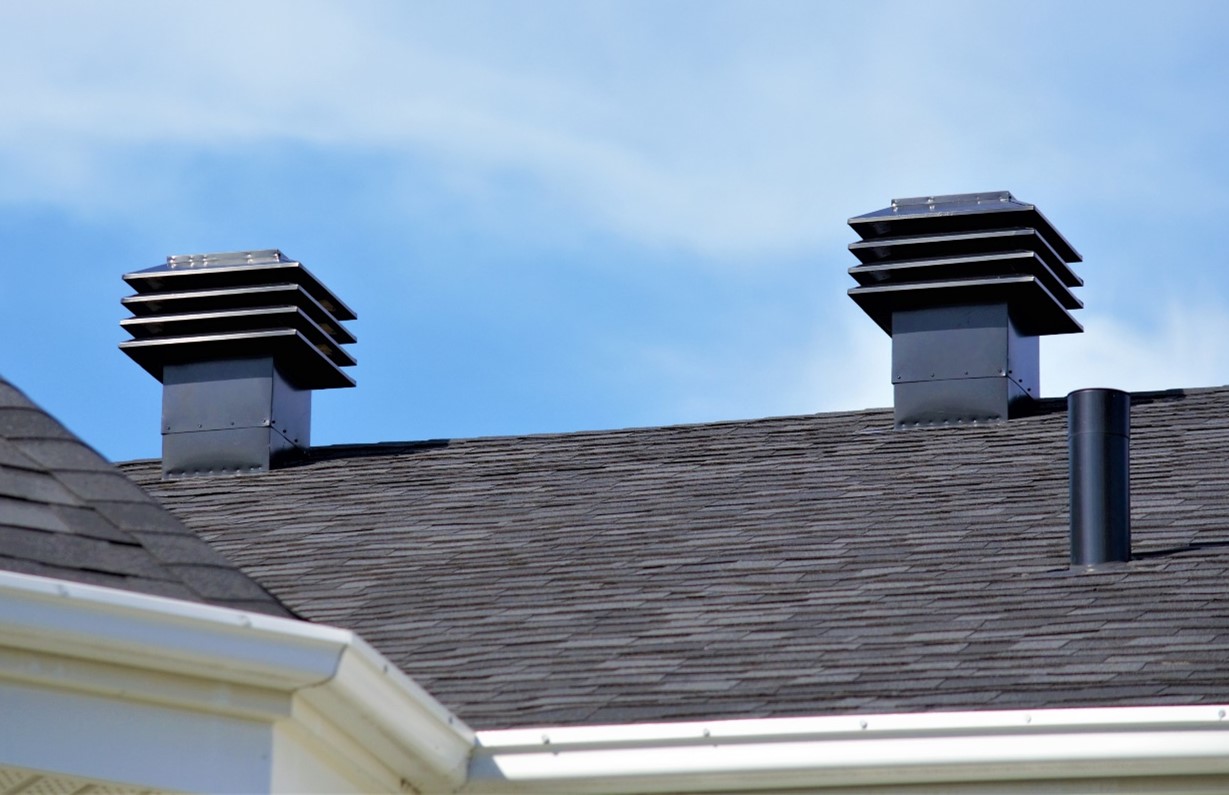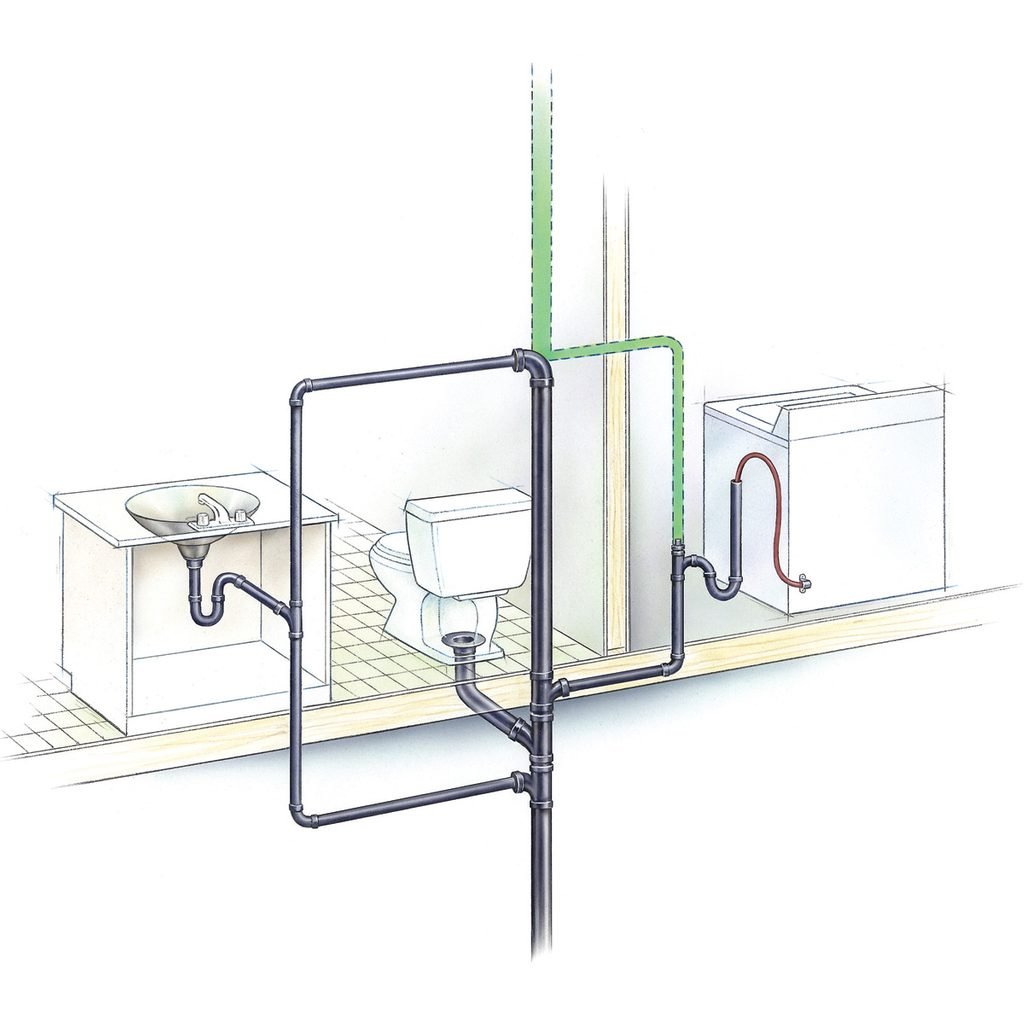Correct Ventilation in Plumbing Systems: What It Is Important
Correct Ventilation in Plumbing Systems: What It Is Important
Blog Article
In this article in the next paragraphs you can locate more good points about What Are Plumbing Vents and Why Are They Important?.

Correct ventilation in plumbing systems is frequently ignored, yet it is important for keeping the functionality and safety and security of your home's plumbing. Ventilation helps regulate air pressure, avoid the buildup of harmful gases, and guarantee the effective elimination of waste. In this overview, we will certainly check out the relevance of appropriate pipes air flow, how it works, and the benefits it brings to your pipes system.
Comprehending Air Flow in Pipes
Ventilation in plumbing refers to the network of pipes that enable air to move through the water drainage system. These vents offer numerous purposes, consisting of regulating air pressure within the pipes, preventing sewer gases from entering the home, and assisting in the smooth circulation of wastewater.
How Ventilation Functions in Plumbing Solutions
Air Pressure Policy
Proper ventilation maintains well balanced air pressure within the plumbing system. When water streams via pipelines, it displaces air. Without sufficient air flow, this variation can create negative pressure, leading to reduce drains pipes or siphoning of water from traps, which can trigger unpleasant odors to permeate into the home.
Stopping Sewage System Gas Buildup
Among the most critical functions of pipes vents is to prevent sewage system gases, such as methane and hydrogen sulfide, from building up within the home. These gases can posture major health and wellness threats and are highly flammable. Vent pipes enable these gases to get away securely outdoors.
Helping in Waste Elimination
Ventilation assists in the effective elimination of wastewater by protecting against airlocks in the drain system. When air can stream easily via the vents, it enables water and waste to move smoothly with the pipes, minimizing the risk of clogs and back-ups.
Sorts Of Plumbing Vents
Main Heap Vent
The primary stack air vent, additionally known as the air vent pile, is the main vent in a pipes system. It expands from the primary drain align through the roofing system, allowing gases to run away and fresh air to go into the system.
Branch Vent
Branch vents link to the primary pile air vent and serve specific fixtures, such as sinks, commodes, and showers. These vents make sure that each component has adequate air flow to operate effectively.
Air Admission Valve (AAV).
An Air Admission Valve (AAV) is a one-way valve that permits air to enter the plumbing system without the need for a typical vent pipe prolonging with the roofing. AAVs are commonly used in restorations or locations where mounting a standard vent is not practical.
Signs of Poor Ventilation in Plumbing.
Slow Draining Fixtures.
If your sinks, tubs, or commodes are draining pipes slowly, maybe a sign of poor ventilation. Inadequate air circulation can create a vacuum cleaner effect, making it tough for water to drain appropriately.
Gurgling Appears.
Gurgling noises coming from drains are commonly an outcome of air being drawn through water traps due to adverse pressure in the pipes. This is a clear sign of inadequate air flow.
Unpleasant Smells.
Sewage system smells inside your home are a red flag that your pipes system is not properly aerated. This could suggest that sewer gases are not being adequately aired vent outside, causing possibly unsafe problems.
Common Air Flow Errors.
Inadequate Vent Sizing.
Using small vent pipes can bring about inadequate air circulation and pressure discrepancies in the system. It's necessary to make use of vents that satisfy the certain needs of your plumbing system.
Improper Vent Placement.
Putting vents as well much from the fixtures they serve can reduce their effectiveness. Correct placement ensures that air can move openly and effectively via the system.
Disregarding Code Demands.
Building regulations offer specific guidelines for pipes air flow. Overlooking these codes can cause a system that falls short to work properly and may cause costly fixings or health hazards.
Advantages of Proper Air Flow.
Boosted System Effectiveness.
Effectively aerated plumbing systems run much more effectively, with less clogs, faster draining, and much less stress on the pipelines. This performance prolongs the life-span of the pipes system.
Improved Air Top Quality.
By preventing drain gases from entering your home, appropriate air flow contributes to better interior air quality, making your living environment healthier and a lot more comfortable.
Protecting Against Water Damages.
Adequate air flow assists protect against water from being siphoned out of traps, which can cause sewage system gases going into the home and triggering water damage in time.
Actions to Make Sure Proper Air Flow.
Consulting Plumbing Codes.
Constantly seek advice from local plumbing codes when designing or changing your plumbing system. These codes supply the necessary guidelines for appropriate airing vent and ensure your system satisfies safety criteria.
Regular Evaluation and Upkeep.
Normal examinations can aid identify possible ventilation problems prior to they become major troubles. Maintenance jobs, such as cleansing air vent pipelines and checking for blockages, are vital for keeping the system in good working order.
Expert Installment.
For new setups or significant alterations, it's important to hire a specialist plumbing technician. They have the experience to make sure the ventilation system is appropriately developed and mounted according to code.
Conclusion.
Appropriate ventilation is an important component of any type of pipes system, making certain that it works successfully and safely. By comprehending the relevance of ventilation, acknowledging the indicators of poor ventilation, and taking steps to preserve your system, you can protect against expensive issues and secure your home's air quality.
4 Things You Should Know About Your Plumbing Vents
What Plumbing Vents Are
Also called a vent stack, a plumbing vent is a vertical pipe attached to your drain line that runs through your roof. The plumbing vent pipe, or plumbing air vent, removes gas and odors from your plumbing system and allows fresh air to enter the pipes, helping the water to flow out of the drain pipes.
What Plumbing Vents Do
Plumbing vents have two basic functions. One of which is to allow unpleasant smelling wastewater and sewer gasses to escape your plumbing system instead of entering your home. Plumbing vent pipes are typically located on roofs, away from windows, to ensure the fumes exit the home completely.
The other function of the plumbing vent is to move fresh air into your plumbing system. This helps move water through every plumbing fixture in your house, like toilets and sink drains. Think of the way in which you need to let a little air into the bottle as you pour soda in order to make the drink flow smoothly.
Different Types of Plumbing Vents
True vent: This is the most common vent option. In simplest terms, a true vent is a vertical pipe attached to your drain line that exits through the roof. They often function as the main vent that other fixtures can connect to. Re-vent pipe or auxiliary vent: Attached to the drain line near specific plumbing fixtures, re-vent pipes run up and over to connect to the main vent. Common vent: Two plumbing fixtures installed on opposite sides of a wall are typically tied into the vent stack using something known as a sanitary cross. Wet vent: This venting option operates as a drain pipe and a vent at the same time. Wet vent drainage systems drain water from one fixture while venting the air from another. Although they’ve been used for over 100 years, wet vent systems have only recently been added to the plumbing code in many areas. If you’re planning on installing one in a bathroom remodel, make sure you check your local code prior to construction. Loop vent: For free-standing fixtures like kitchen island sinks, loop vents are ideal. These vent pipes run under the floor, rise from the P-trap, and create a loop inside the cabinet sink. Air admittance valve: An AAV is a one-way mechanical valve typically installed at the site of the plumbing fixture. AAVs allow venting to occur without having to tie into a larger venting system. They’re ideal for venting fixtures where you aren’t able to easily connect to an existing vent system. Common Plumbing Vent Issues
Although vent pipes typically don’t have water flowing through them, they’re still subject to many typical plumbing issues. For example, clogs are one of the most common problems associated with sewer vent pipes. If your vent pipe gets clogged, all of your plumbing fixtures tied into the vent stack will be affected.
A sink with a slow drain that bubbles and gurgles or a strong sewage smell around your toilet are both indicators that your toilet vent pipe is clogged. Because most vent pipes exit through the roof, old leaves, twigs or even a bird’s nest could be clogging the pipe.
Clogs in your vent pipe system cause a buildup of negative pressure, meaning that water won’t be able to flow out of your home very well. It’s similar to putting your finger over the opening of a straw to trap water inside. When you remove your finger, the water is able to flow out of the straw.
If you suspect you have any blockage in your vent, make sure you have a professional come examine the situation. Left unchecked, a blocked air vent can lead to other costly repairs, like leaks and sediment buildup.
Under Pressure
Pipe vents are essential aspects of a home’s plumbing system. Owning a home means learning about all sorts of things you never put much thought into before. But by understanding as much as you can about the important systems of your home, you can keep those budgets intact and those anxiety levels low.
https://www.homeserve.com/en-us/blog/home-improvement/plumbing-vents/

We had been brought to that report about What Are Plumbing Vents and Why Are They Important? from an associate on a different blog. Do you know about somebody else who is occupied with the topic? Feel free to promote it. Many thanks for taking the time to read it.
Book Report this page